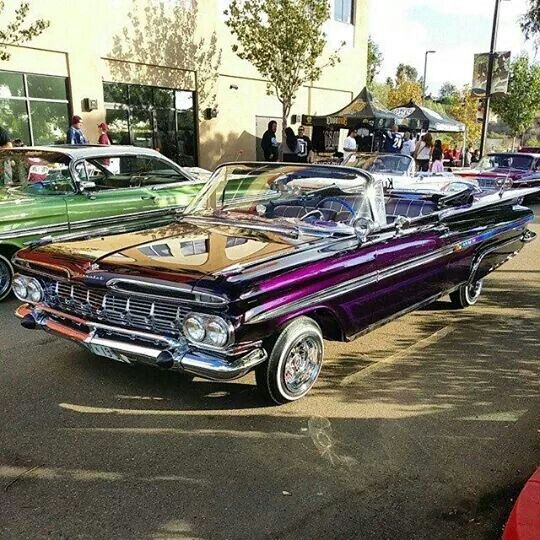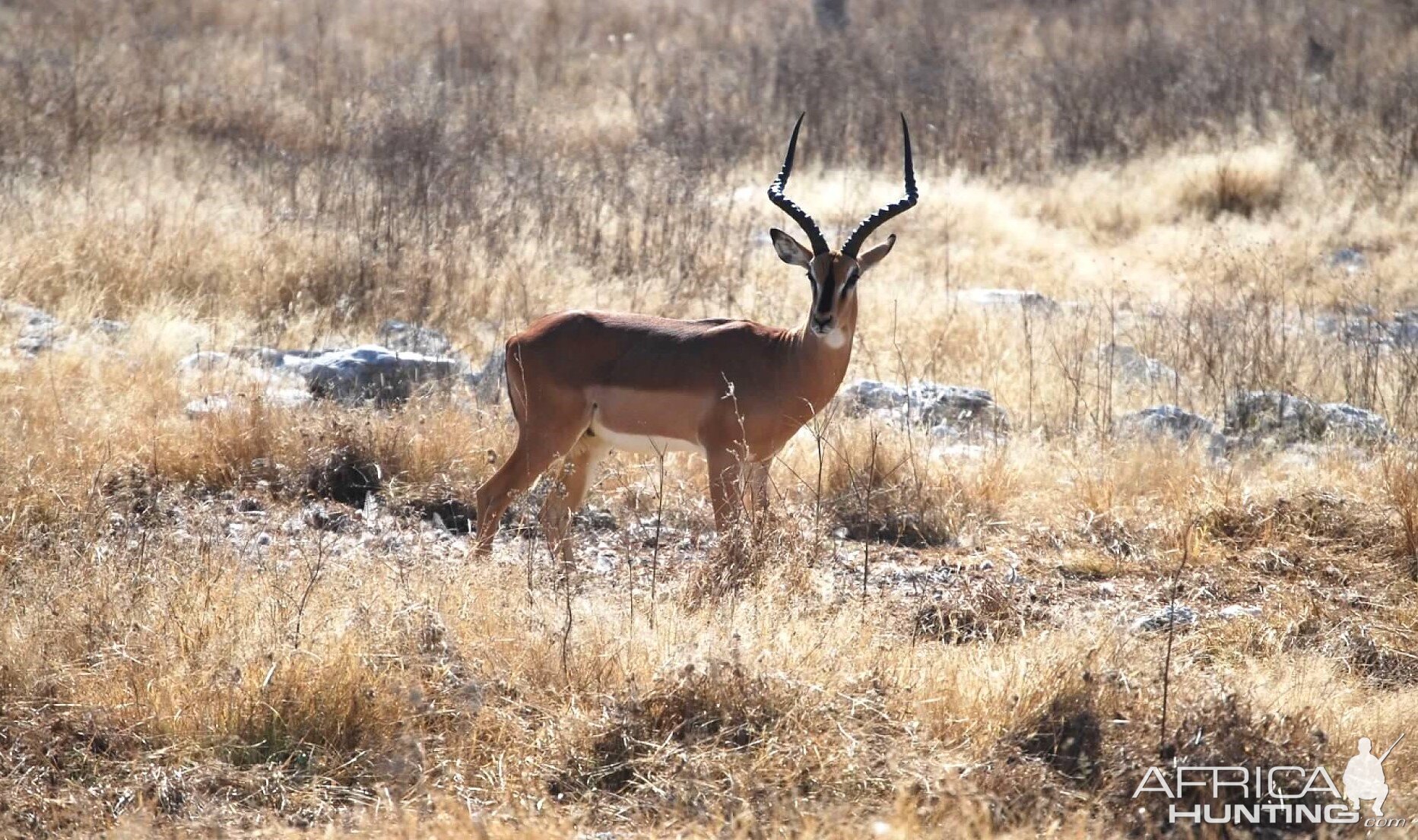Hank2211
AH legend
- Joined
- Jan 12, 2010
- Messages
- 3,392
- Reaction score
- 9,648
- Media
- 228
- Articles
- 4
- Member of
- SCI, DU, Pheasants Forever
- Hunted
- Canada, United States, Zimbabwe, South Africa (Eastern Cape; Northern Cape; North West Province, Natal, Mpumalanga, Limpopo), Namibia, Cameroon, Benin, Ethiopia, Liberia, Mozambique, Argentina
In another thread the black face impala came up and a couple of members stated that this was a color phase of regular impala. I'd like to take issue with that comment.
I think this is more than semantics, although it may not matter to most, if not almost all, of us. However, I think we need to be clear what we're talking about when we use these terms. Call it the pedant in me.
"Color phase" is used, I suggest, to refer to animals of the same species or subspecies which are identical in all genetic respects but for color. Generally, one color or another is the dominant color while another is the less common color and pops up every now and again depending on which animals breed with which animals. The less common color is due to a recessive gene which only manifests itself when the animal carrying the recessive gene mates with another animal carrying a similar recessive gene, and even then the occurrence is erratic at best. This of course can be manipulated by ensuring through a breeding program that certain animals where the recessive gene dominates only breed with similar animals, thus giving rise to more of the particular color variant than would otherwise exist in nature (though by no means 100%). Many people (see Peter Flack for example) have an issue with this sort of manipulation of wild animals.
Examples of color phase animals include black bears, where many are other colors ranging from red to cinnamon to brown, but all are urus americanus. In Africa, we often see or hear about golden wildebeest or golden oryx. A blue wildebeest is conochaetes taurinus taurinus, as is a golden wildebeest - conochaetes taurinus taurinus in every respect. It just so happens that one is not the "normal" color. That's a color phase.
As a further note, color variants or color phases do not have an independent conservation status since they occur more or less randomly depending on breeding patterns and they can be manipulated by breeders to increase the incidence of the color phase. In other words, the color phase would never be at risk of extinction unless you bred the recessive gene out of every wild animal in the species, an obvious impossibility.
To move on to species and subspecies, sticking with the blue wildebeest as an example, we can say that there are five 'races' or subspecies of blue wildebeest: the common blue or brindled gnu (C. t. taurinus, referred to above); two white-bearded wildebeests known as conochaetes taurinus mearnsi and C. t. albojubatus; the Cookson's wildebeest (C. t. cooksoni) and the Johnston's (C. t. johnstoni). All of these five races are members of the species Conochaetes taurinus. None is a color phase or color variant of the others.
All of the five races of blue wildebeest have an independent conservation status. You could breed the common blue forever and you would never get a Cookson's. Here, though, I note that these subspecies can and often do interbreed if allowed to, but the resulting animal is not one or the other but a variant of both, and likely a hybrid that those in charge of diversity would try to avoid.
So, what of the black-faced impala? Let's start first with the black impala. This animal is all black and looks like an impala, because it is, in fact, a common impala - Aepyceros melampus melampus in all respects. This animal occurs from time to time in nature, but is naturally quite rare. People have begun breeding for it and have produced more than would otherwise naturally occur (although they tend to be weak looking and fairly small in stature (at least the ones I've seen) - likely a result of the (weaker) recessive genes). There is no independent conservation status for the black impala.
The black-faced impala on the other hand is not Aepyceros melampus melampus but rather is A. melampus petersi. A. M. petersi is "comparatively rare subspecies" (Brittanica) and you will not ever breed a petersi from A. m. melampus, no matter how long and hard you try (unless somewhere along the line a petersi has interbred with a melampus, in which case you will have a mixture of both, but not pure one or the other - a hybrid).
The IUCN recognizes the black-faced impala as Aepyceros melampus ssp. petersi, and states that it is "Vulnerable" while the common impala is designated "Least Concern."
To sum up this overlong post, the black impala is a color variant. The black-faced impala is a subspecies. The black impala has no separate conservation status while the black-faced impala does.
References which I've relied upon are the IUCN Red List as well as Game Animals of the World (Stuart, 2014) as well as Encyclopedia Brittanica and some odds and ends in the genetics area. Having said that, happy to be shown the error of my ways, as usual!

I think this is more than semantics, although it may not matter to most, if not almost all, of us. However, I think we need to be clear what we're talking about when we use these terms. Call it the pedant in me.
"Color phase" is used, I suggest, to refer to animals of the same species or subspecies which are identical in all genetic respects but for color. Generally, one color or another is the dominant color while another is the less common color and pops up every now and again depending on which animals breed with which animals. The less common color is due to a recessive gene which only manifests itself when the animal carrying the recessive gene mates with another animal carrying a similar recessive gene, and even then the occurrence is erratic at best. This of course can be manipulated by ensuring through a breeding program that certain animals where the recessive gene dominates only breed with similar animals, thus giving rise to more of the particular color variant than would otherwise exist in nature (though by no means 100%). Many people (see Peter Flack for example) have an issue with this sort of manipulation of wild animals.
Examples of color phase animals include black bears, where many are other colors ranging from red to cinnamon to brown, but all are urus americanus. In Africa, we often see or hear about golden wildebeest or golden oryx. A blue wildebeest is conochaetes taurinus taurinus, as is a golden wildebeest - conochaetes taurinus taurinus in every respect. It just so happens that one is not the "normal" color. That's a color phase.
As a further note, color variants or color phases do not have an independent conservation status since they occur more or less randomly depending on breeding patterns and they can be manipulated by breeders to increase the incidence of the color phase. In other words, the color phase would never be at risk of extinction unless you bred the recessive gene out of every wild animal in the species, an obvious impossibility.
To move on to species and subspecies, sticking with the blue wildebeest as an example, we can say that there are five 'races' or subspecies of blue wildebeest: the common blue or brindled gnu (C. t. taurinus, referred to above); two white-bearded wildebeests known as conochaetes taurinus mearnsi and C. t. albojubatus; the Cookson's wildebeest (C. t. cooksoni) and the Johnston's (C. t. johnstoni). All of these five races are members of the species Conochaetes taurinus. None is a color phase or color variant of the others.
All of the five races of blue wildebeest have an independent conservation status. You could breed the common blue forever and you would never get a Cookson's. Here, though, I note that these subspecies can and often do interbreed if allowed to, but the resulting animal is not one or the other but a variant of both, and likely a hybrid that those in charge of diversity would try to avoid.
So, what of the black-faced impala? Let's start first with the black impala. This animal is all black and looks like an impala, because it is, in fact, a common impala - Aepyceros melampus melampus in all respects. This animal occurs from time to time in nature, but is naturally quite rare. People have begun breeding for it and have produced more than would otherwise naturally occur (although they tend to be weak looking and fairly small in stature (at least the ones I've seen) - likely a result of the (weaker) recessive genes). There is no independent conservation status for the black impala.
The black-faced impala on the other hand is not Aepyceros melampus melampus but rather is A. melampus petersi. A. M. petersi is "comparatively rare subspecies" (Brittanica) and you will not ever breed a petersi from A. m. melampus, no matter how long and hard you try (unless somewhere along the line a petersi has interbred with a melampus, in which case you will have a mixture of both, but not pure one or the other - a hybrid).
The IUCN recognizes the black-faced impala as Aepyceros melampus ssp. petersi, and states that it is "Vulnerable" while the common impala is designated "Least Concern."
To sum up this overlong post, the black impala is a color variant. The black-faced impala is a subspecies. The black impala has no separate conservation status while the black-faced impala does.
References which I've relied upon are the IUCN Red List as well as Game Animals of the World (Stuart, 2014) as well as Encyclopedia Brittanica and some odds and ends in the genetics area. Having said that, happy to be shown the error of my ways, as usual!

Last edited by a moderator:
 to the Pedant in all of us.
to the Pedant in all of us.



 Otherwise knows as Little Potato!
Otherwise knows as Little Potato!



